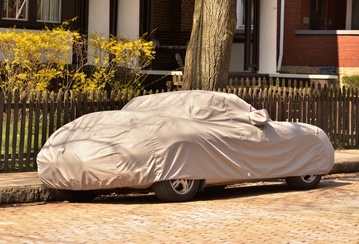How to maintain a vehicle you don’t drive often

From decreasing your commute to putting your car in storage for the season, there are plenty of reasons why you might not be driving your vehicle as often as you used to. But don’t let it sit collecting dust — follow these steps to maintain your car and keep it ready to hit the road:
-
Keep your car covered. If your home has a garage or a carport, consider parking your car inside to protect it from the elements and inclement weather. If your home doesn’t have a garage or carport and you must park outside, consider buying a weatherproof and UV resistant car cover to protect your vehicle’s paint from accidental scrapes and protect its interior from UV damage.
-
Take your car for a spin twice a month. On average, a car can sit unused for up to a month without the battery draining. To avoid finding a dead battery when it’s finally time to hit the road, take it for a 20-to-30-minute drive at least twice a month. This will also allow fluids and oil to circulate and keep your car’s critical systems lubricated.
Note: If you’re storing your car in the garage, make sure you leave the garage door open while allowing your car to idle so carbon monoxide from your car’s exhaust can escape.
-
Keep the gas tank full. While it may seem like a waste to buy gas for a car you aren’t driving regularly, you’ll be glad you filled your tank, as moisture can build up in an empty gas tank as the weather changes, which can lead to damage.
-
Follow the manufacturer’s recommended oil change schedule. If you’re planning on keeping your vehicle off the road for more than three months at a time, change the oil before putting it in long-term storage. If you’re still driving your vehicle occasionally but you aren’t driving it enough to hit the mileage interval for an oil change, check your owner’s manual to see how long you can wait before getting an oil change.
-
Check your tire pressure before driving. Your car’s tires can slowly lose pressure, especially if it sits for an extended period. Before driving your car again, check each tire’s air pressure and — if it’s lower than the manufacturer’s recommended air pressure level, which is measured in pounds per square inch — inflate each tire to the correct level.
-
Regularly check for pests. A sitting vehicle is the perfect home for rodents and insects. To prevent these unwanted tenants from moving into your vehicle, regularly inspect inside your car’s trunk and cabin for unwanted visitors. While inspecting your vehicle, also be sure to check under the hood, as wasps and bees can squeeze in and start building a hive.
-
Keep your car insured. Cancelling your car insurance policy may seem like an easy way to save money if you’re not driving your vehicle often, but it’s illegal to drive your car at all without coverage — and if you’re involved in an accident, you’ll have to pay for expensive repairs out of pocket. Luckily, you can update your car insurance coverage to reflect the fact that you’re not driving as much as you used to, which could result in a lower premium.
If you have questions about your current car insurance coverage, contact us at 1-888-494-0090. If you would like to get a quote for car insurance, contact an OTIP broker today at 1-888-892-4935.